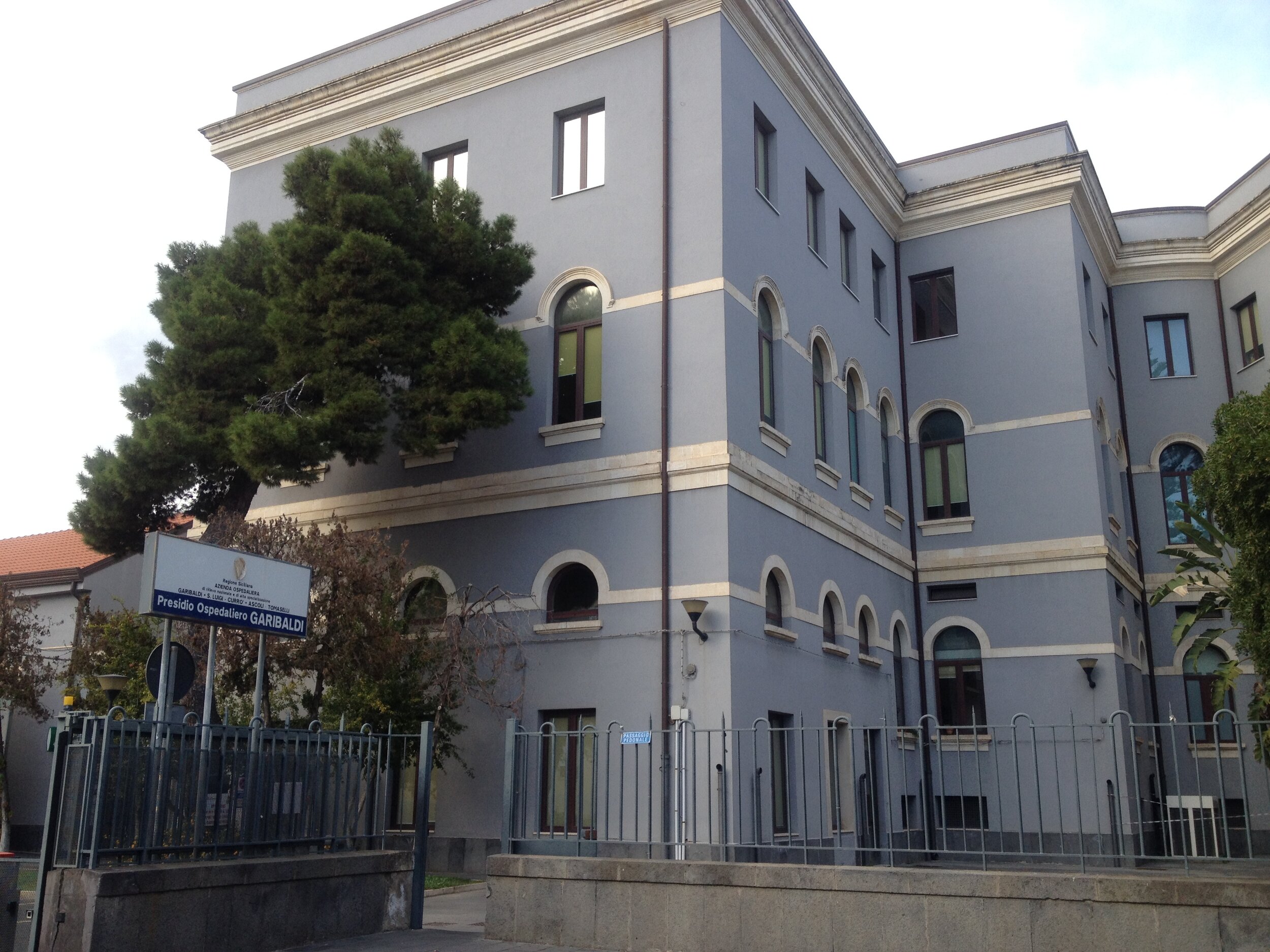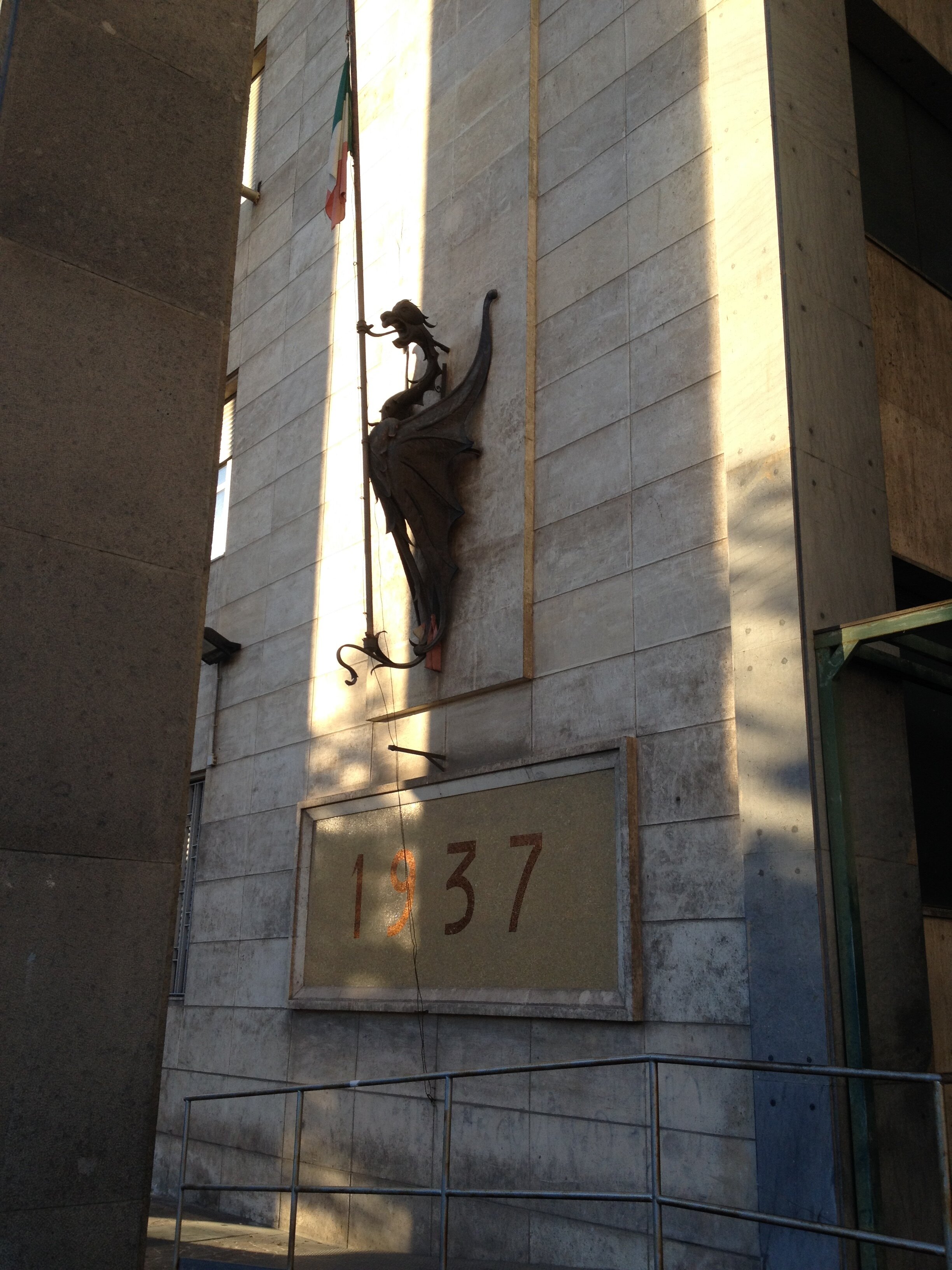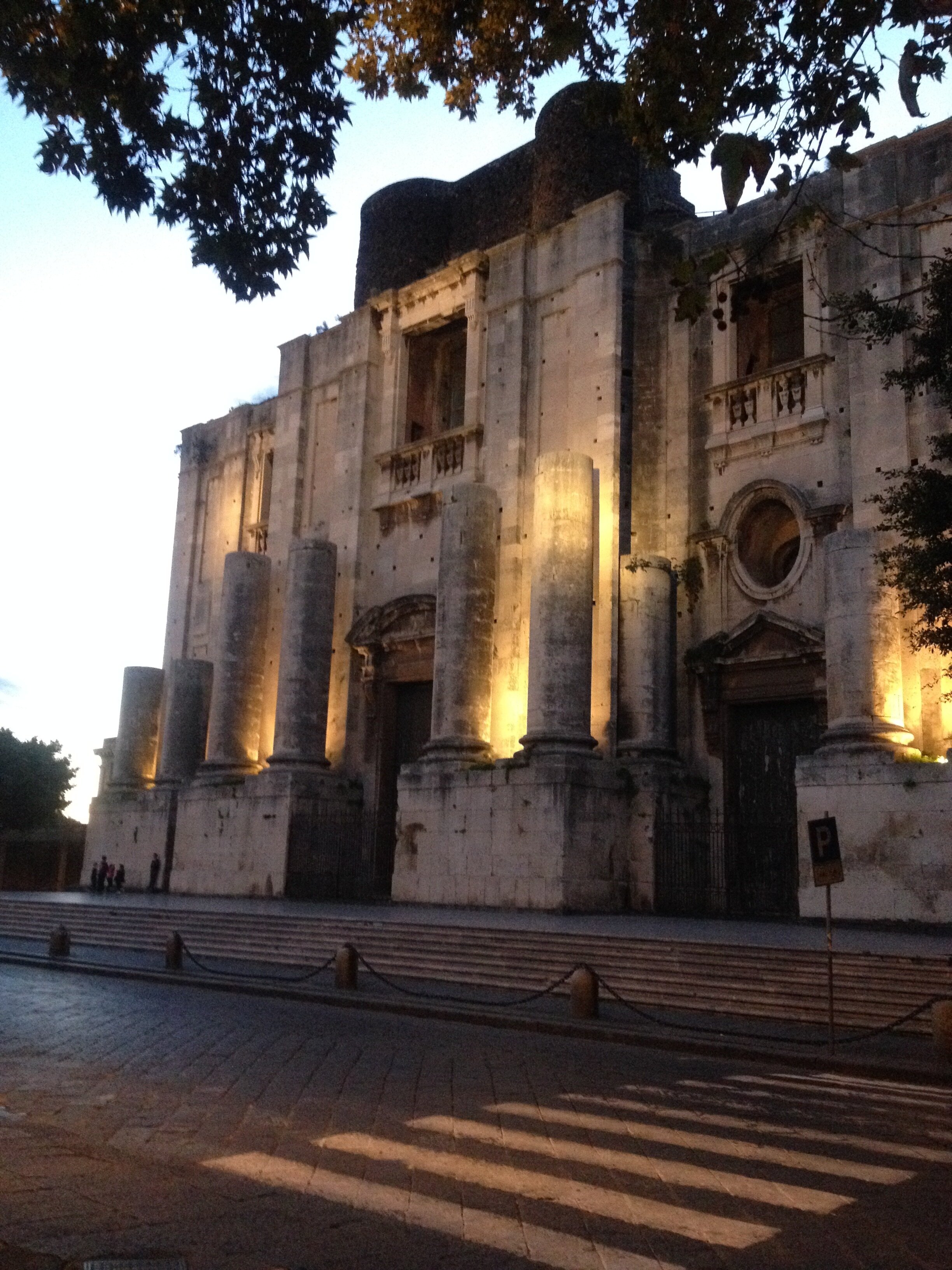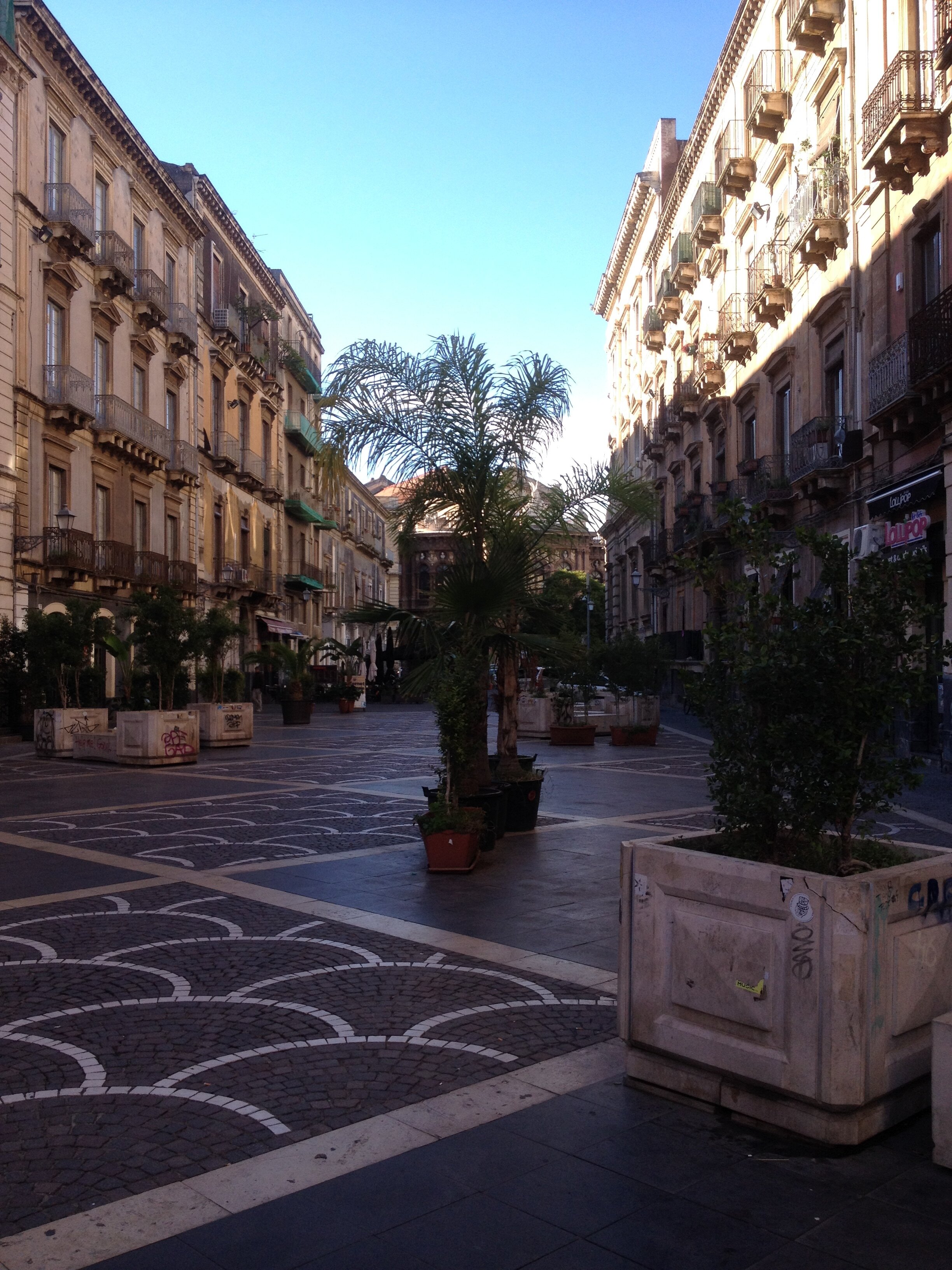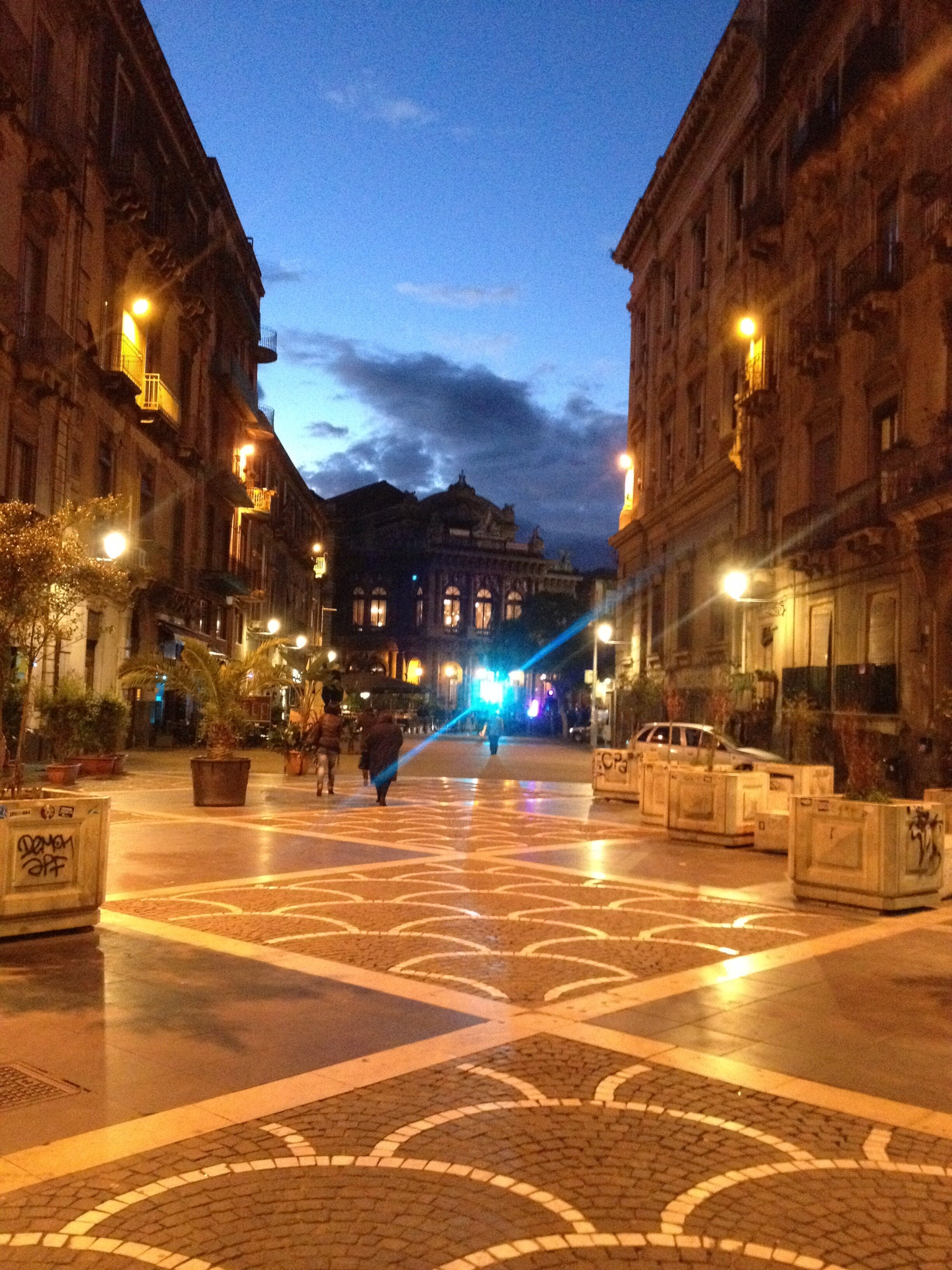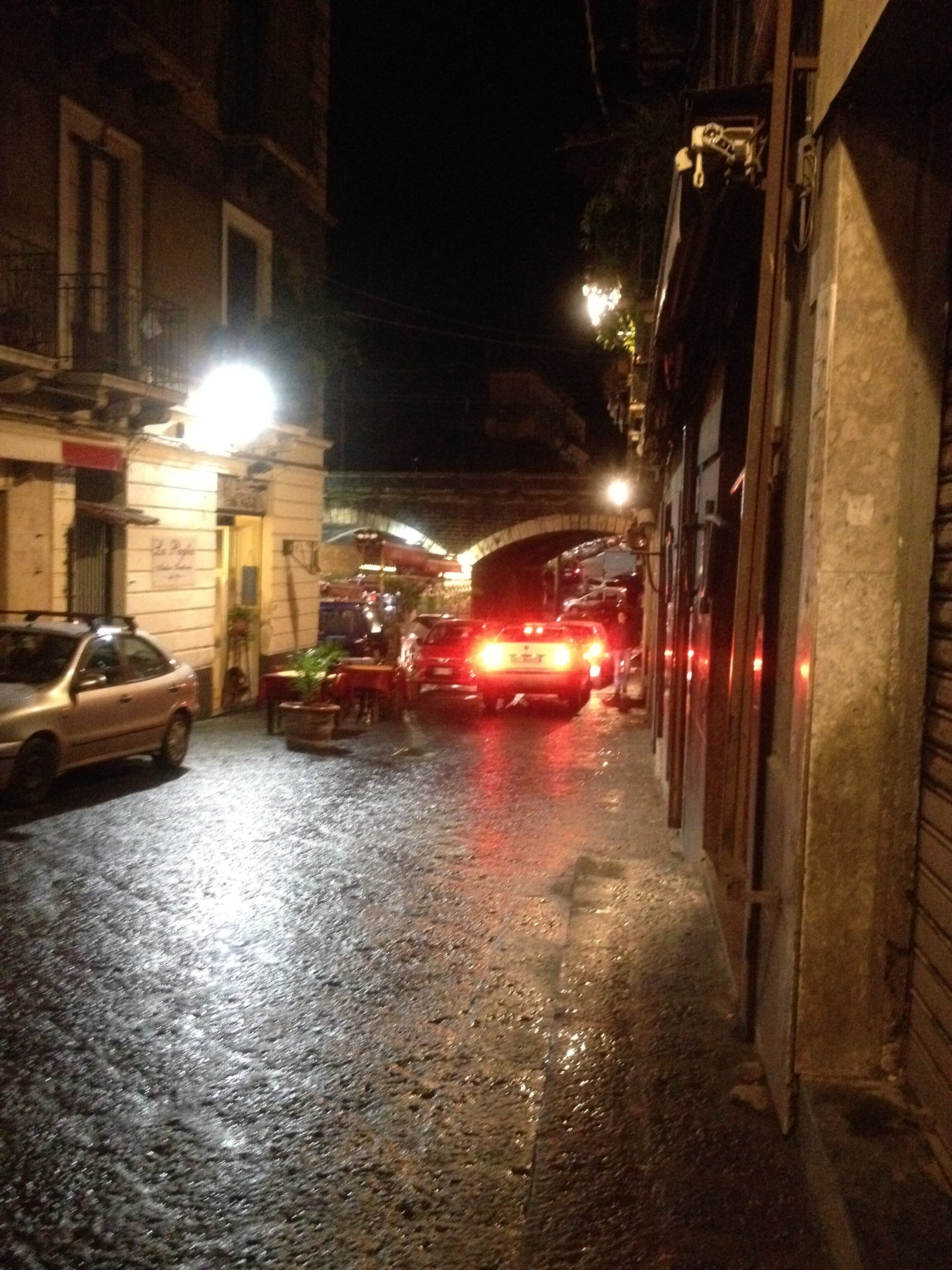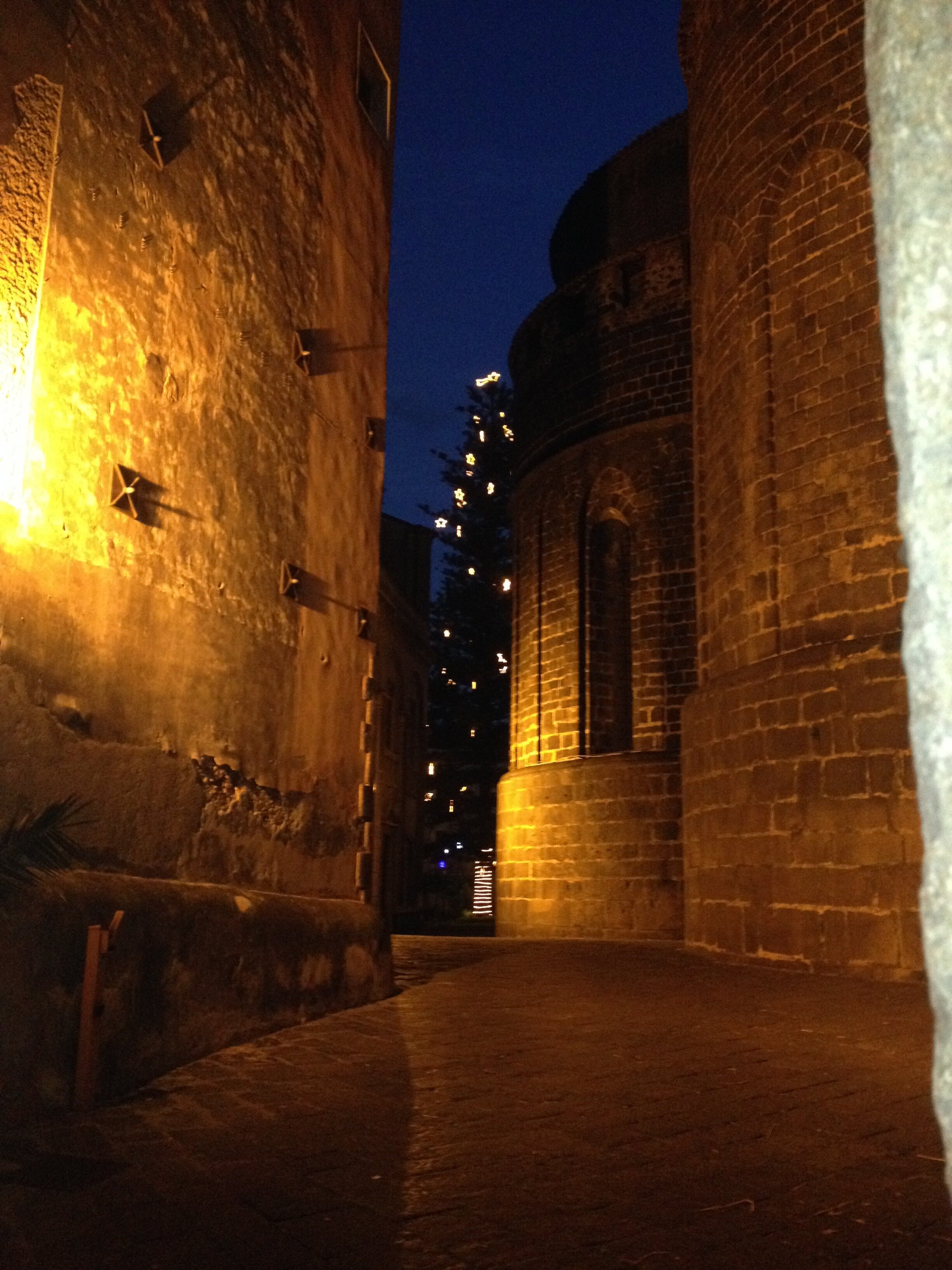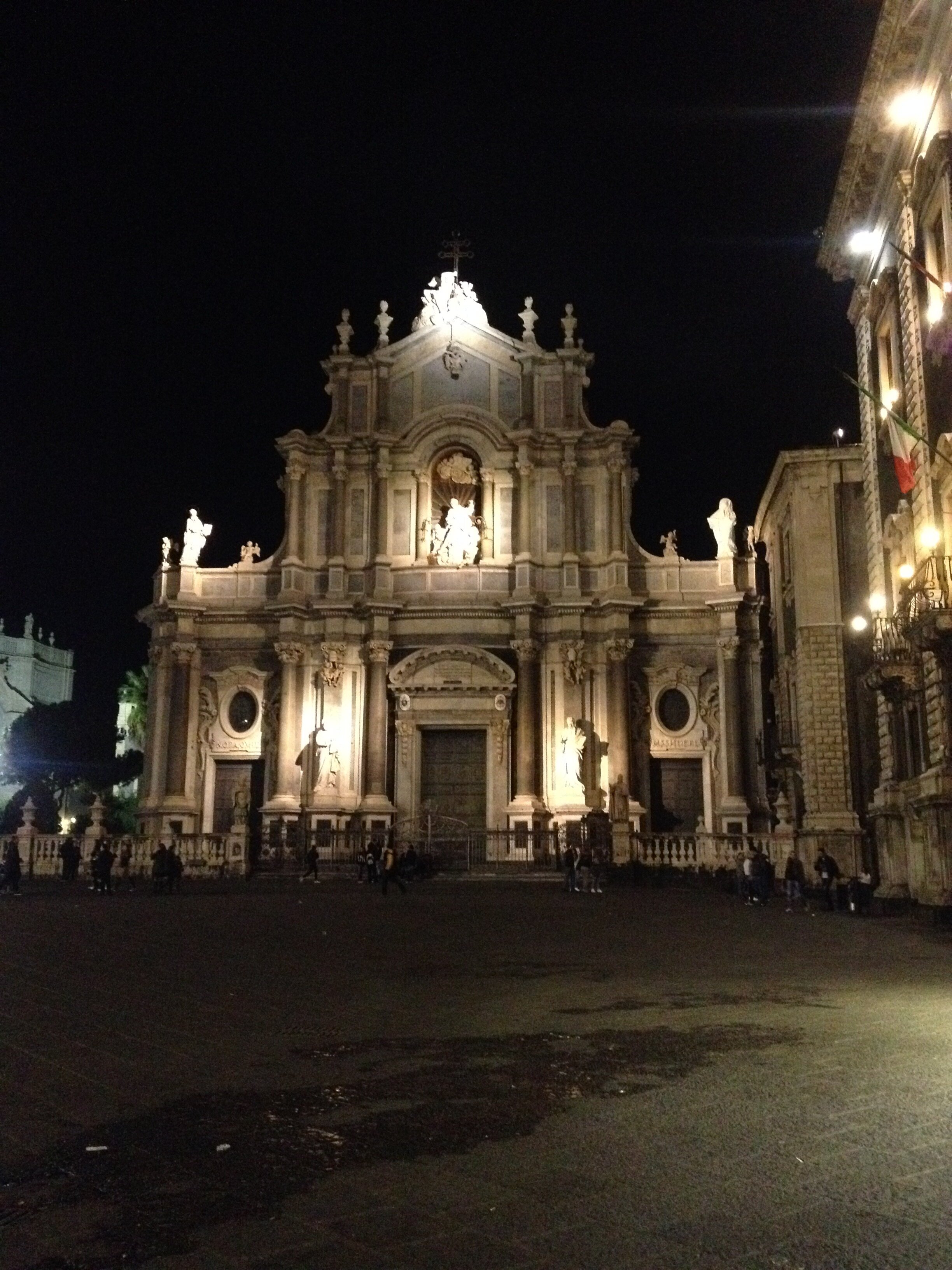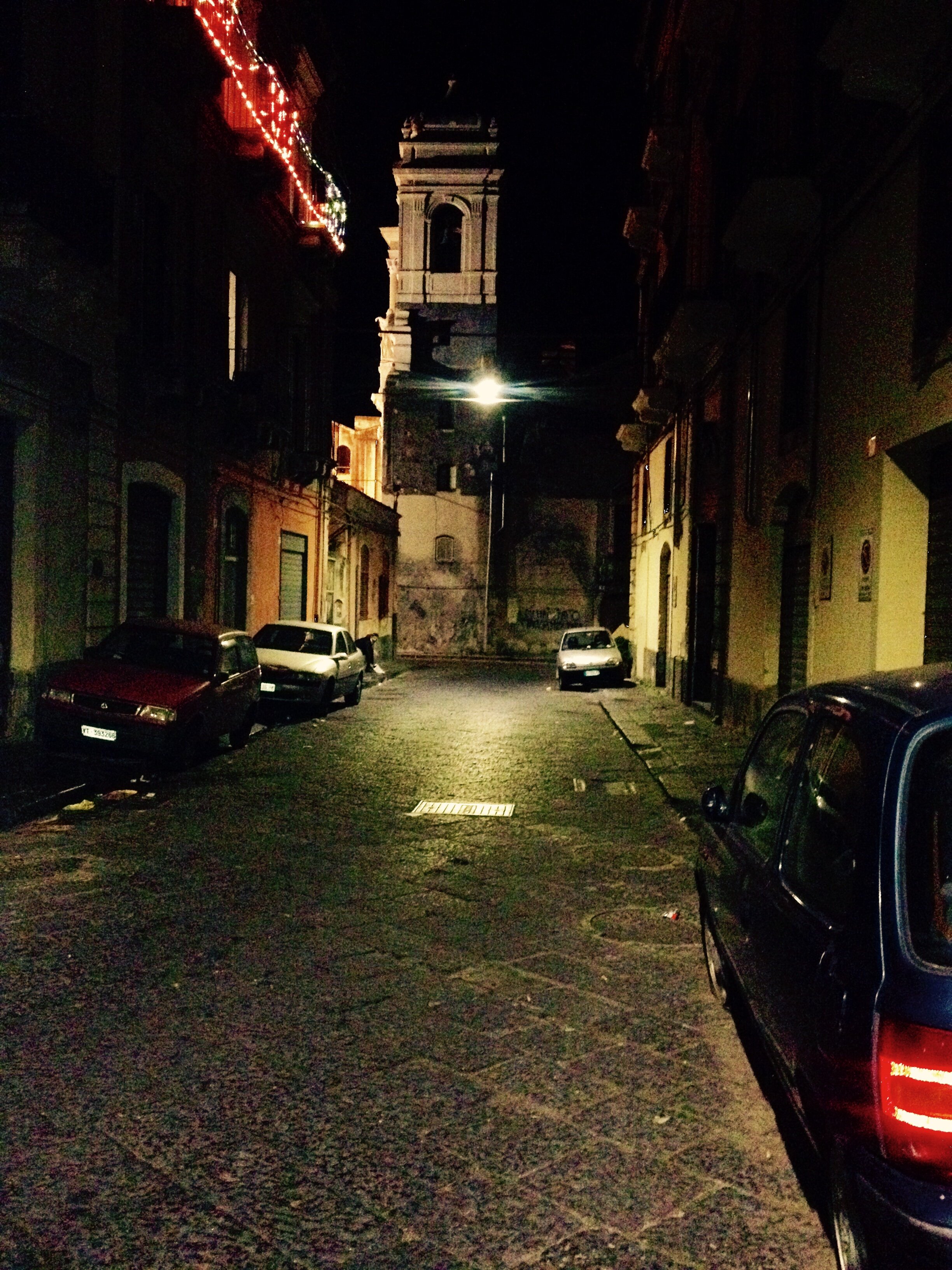Catania
I visited Catania several times whilst writing Mussolini’s Island - although I had written a first full draft without seeing it at all. This is not necessarily something I’d advise, but it always seems to happen to me - I get so caught up in the book itself, that I forget to stop and take in the view. There will be writers out there who would say this is no way to do it, but if you’re in a similar position, all I can say is - don’t panic. You’ll absolutely benefit from visiting your real world setting, but you don’t have to do it first, or even during. And of course, if your real world setting is the moon, or North Korea, or a remote island somewhere inaccessible, or just somewhere you can’t afford the time or money to visit, it’s entirely fine to just…skip it altogether. That’s what imaginations are for, after all.
Either way, a visit to Catania comes highly recommended. It’s sort of…grungy, in a beautiful, falling apart elegantly way that only Italy can pull off. There’s really no excuse not to go - flights are pretty regular and affordable, and its a relatively inexpensive city. It’s also one of those places where you get elaborate snack bowls every time you order a drink, which I’m a big fan of.
Catania is the home of my central character, Francesco, and where the real 45 men imprisoned on San Domino were arrested. During my visits I found a number of original sites from their story - and a few red herrings along the way…
The dance hall
This was one of the meeting places for the arrusi, and has had many incarnations over the years. I had imagined, absurdly, a sort of majestic ballroom, but when I found the Piazza San Antonio and the building that’s now a sports bar, I realised how wrong I’d been - it must have been pretty cramped, even without a band at one end of the room.
‘When they reach the piazza, they can already hear the music through cracks in the windows, feel the vibration of feet on the uneven floor. They move quickly across the unlit square, keeping their heads down until they are safely inside the tiny, crowded space.
It is not like the dance halls they have seen in films, and not just because there are no women here. The room is bare, without furniture. At the far end, on a raised step, a small orchestra is assembled, tunelessly scraping its way through a waltz. The music is always slightly dated, as though the room is a snapshot of another era.’
-p. 62-63
The railway arches
Catania’s railway arches are one of the city’s striking features - and research into the arrusi brings them up time and time again. They were one of the places the ‘arrusi’ - particularly the younger men - met up under cover of darkness. At the time, the sea was much closer, and in places would have reached the arches themselves - when they were built in the nineteenth century, some of their foundations were laid under water. These days, the sea is further back, but I imagined my characters being able to sit beneath the arches and dangle their feet in the water.
‘Francesco sits beneath the railway arches by the port, dangling his bare feet in the water. It beats against his calves with the motion of ships in the docks. The sun is high over his head, pooling on its rippling surface.
The railway arches don’t feel so safe in the daylight. He can hear the crowds behind him, the rattle of carts on their way to the fish market. He isn’t used to seeing the brickwork in the sun; the arches are not black and shadowed, but a deep, soot-stained grey, marked by the passing of so many trains overhead. He puts out a hand and runs it across the rough, curved wall behind him. Wonders if the arches were once clean, the colour of sand and stone.’
-p 137
The hospital
This was an unexpected bonus - I was scanning google maps and I thought I recognised a place name - on checking back, it was clear the original two hospitals which the men were taken to for examination before their arrests were still here.
‘He knows the prison at once, its ochre walls lined with barred windows, but the building next to it is unfamiliar. It is large and sprawling, without windows. Its walls are painted a pale sky blue. He watches as they drive past it, searching for a way to see inside it. As the car slows, he turns in his seat and sees a door open in the blue wall. A woman comes out. She is dressed all in white. A white cap is pinned to her hair. When she turns, Francesco sees the unmistakable sign painted on the back of her dress. A bright red cross.’
-p 328
Even hospitals in Italy are stylish
The Court House
I got quite excited when I first saw Catania’s Court House. The design looks very…fascist, and given my characters were arrested I thought it might be relevant. Also there was a big ‘1937’ on a plaque on the outside wall. I have very few pictures, for reasons which will become obvious.
I found the building whilst visiting the city with my parents, and on approaching we realised it wasn’t open to the public, and had some pretty heavy security. Not to be deterred, I asked if it was possible to look round, to which the answer was an extremely emphatic ‘no’. At which point dad flashed his lawyer credentials at a man with a gun, declared he was doing some sort of tour of the Italian legal system and that I was his student, and we were enthusiastically ushered in via the metal detectors. Someone summoned the the chief justice who was also extremely enthusiastic, whilst also making various terrifying jokes about how she really worked for the mafia. We could look around, the man with the gun said, but if we took pictures or went anywhere else…well, at this point he pointed at the gun and laughed a lot. We didn’t stay very long.
Also I looked it up later and the building was first used in 1950 so that was…at least an opportunity for a good story.
Catania at night
One of the things that interested me about Catania in the context of my book was the contrasts - great big sweeping squares and wide streets, and narrow, messy back alleys and hidden doorways. That must have been how it felt for the arrusi, living two lives at once. I spent quite a lot of time wandering about in Catania at night and trying to get a feel for the places they would have hidden - the park, the railway arches, the narrow streets. This occasionally got a bit dodgy (and I really don’t recommend it - in any city!) and after a few things got thrown at me (the bottle turned out to be plastic, so I think I was being a bit overdramatic) I beat a hasty retreat.
The arvulu rossu
The tree the younger arrusi met by still stands, right beside a busy roundabout, covered in graffiti. It was one of the first things I went looking for - somehow, you always have faith trees will survive, don’t you?
‘Francesco has been walking the length of the railway line, from the fish market, still pungent with the day’s catch, towards the docks, checking each archway in turn. The street alongside the arches is empty, though two turns away the city is thick with crowds. If he walks far enough, he will reach the arvulu rossu, the tree’s branches webbed against the sky, and there will be six or seven arrusi, maybe more, gathered beneath it, sharing cigarettes, a bottle, secrets.’
-p. 191
